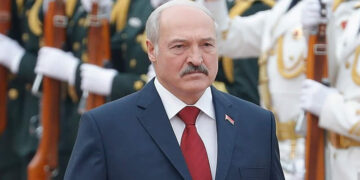 Banking on a large branch network, renowned brand and a pool of low-cost deposit accounts, each of five biggest banks of the country; namely MCB, UBL, ABL, HBL and NBP posted strong first-half earnings this season. All together these banks raked in Rs40 billion, marking a year-on-year increase in earnings of 24 percent.
Banking on a large branch network, renowned brand and a pool of low-cost deposit accounts, each of five biggest banks of the country; namely MCB, UBL, ABL, HBL and NBP posted strong first-half earnings this season. All together these banks raked in Rs40 billion, marking a year-on-year increase in earnings of 24 percent.
Barring NBP, whos bottom-line increased marginally by three percent; the remaining four major banks contributed to the groups profitability growth. In consideration of a higher KIBOR and growing stake in government securities, the groups aggregated net interest income accrued a year-on-year gain of 17 percent to Rs103 billion in 1HCY11.
Their deposit base moved at a good pace, as it reached Rs3148 billion at the end of 1HCY11, representing a jump of eight percent over the first-six months. MCB and HBL led the pack, with expansion in deposit base at 15 and 14 percent, respectively, while NBPs deposit level remained in the same ballpark. In the face of deposit growth, average CASA ratio of the five banks remained unchanged at 70 percent at the end of 1HCY11.
Advances only inched up by one percent to Rs1770 billion by the end of the first half of the current year on the back of weak economic performance and banks own aversion towards climbing non-performing loans. In part, this is down to the banking industrys growing interest in investments; primarily treasury securities, as the groups cumulative investment portfolio expanded by 15 percent to Rs1272 billion at the end of 1HCY11. This helped increase the groups IDR by two percentage points to 40 percent. However, this came at the expense of ADR, which eased down by four percentage points to 56 percent.
NBP, the largest commercial bank, broke the mould as its investment portfolio fell by around 10 percent to around Rs271 billion and advances level jumped by five percent to Rs503 billion. NBP has the lowest IDR, at 33 percent, while MCB has the highest, at 52 percent, among the big-5. Investment banking activities also drove profitability upwards, with the groups cumulative non-mark up income improving by 22 percent in 1HCY11 compared to the same period, a year earlier.
However, non mark-up expenses also increased by a sharp 15 percent during 1HCY11 for these banks, in line with prevailing inflationary trends. Another continuing concern for these banks has been the trend of rising non-performing loans. The cumulative non-performing loans of the five largest banks climbed by 14 percent in the first six months of this year hiking the collective infection ratio for these institutions by 1.5 percentage points to 13.2 percent.
National Bank saw the toxic loans on its books increase by a whopping 25 percent, while HBL and ABL bore hikes of nine and 10 percent, respectively from their kitties. NBP faces the highest infection ratio of around 19 percent. The rise in non-performing loans level has an adverse bearing on coverage ratio, which plummeted by three percentage points to 72 percent at the end of 1HCY11. The banks managers deserve a pat on the back for announcing healthy returns.
But, these institutions should realise that earning money through sovereign instruments is as easy as taking candy from a baby. Given the current situation, it is likely that the government will keep auction doors wide open in the foreseeable future helping the biggest banks announce healthy returns. What is worrisome is the overdependence of the big banks on this window and their consequently declining interest in driving private sector credit demand. – Brecorder











